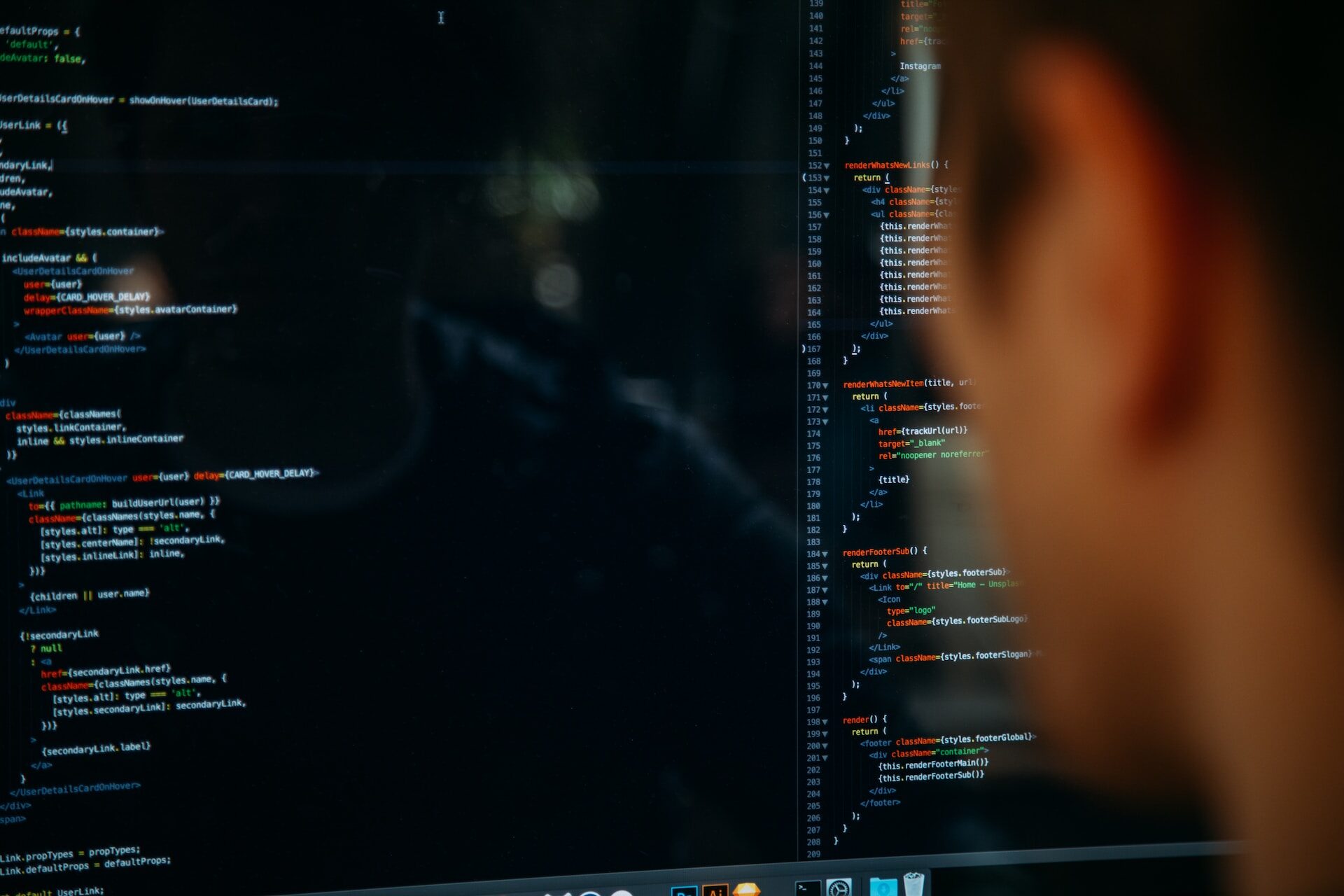
What are the Best Languages for Machine Learning?
November 30, 2021 - Emily Newton
Revolutionized is reader-supported. When you buy through links on our site, we may earn an affiliate commision. Learn more here.
Artificial intelligence has featured as the villain in countless media throughout the last 100 years. The first recorded example of AI as the antagonist dates back to a play called R.U.R. — Rossum’s Universal Robots — by Karel Capek, which premiered in the 1920s. This prohibition-era play featured a group of self-replicating robot slaves that rebel against their human masters.
Today, though, we haven’t cracked true AI. That means none of the programs have displayed true sentience, nor passed the Turing Test. However, the foundational principles of machine learning have started filling niches in a variety of fields. This technology being in its relative infancy means it’s the perfect time for new programmers to get their digital foot in the door. They can learn the skills to create the machine learning algorithms and, eventually, the AI of the future. Even beginner programmers can start learning the basics, but it does help to have some direction.
What are the best languages to learn for machine learning programming?
What Is Machine Learning (ML)?
For those unfamiliar with the concept, what is machine learning? Let’s do a quick overview before diving into the science of making these systems function.
IBM defines machine learning as “a branch of artificial intelligence and computer science which focuses on the use of data and algorithms to imitate the way that humans learn, gradually improving its accuracy.” Essentially, machine learning systems learn the same way we do, but with a few improvements over the biological computers piloting our skeletons.
The capabilities of an ML system are limited only by its programming and its storage space. A cloud-based machine learning program could learn skills and make new connections indefinitely. Human brains are infinitely capable but possess limited storage space. We can build new pathways, but after a while, old information gets overwritten in favor of new memories and skills.
These systems can also be programmed to adapt and change depending on information exposure. A machine learning program can, for example, help diagnose various cancers by studying images of malignant cells and comparing them to images of healthy cells. They can also use the demographics of those images — specifically the age, gender, and other identifying information for each patient. Over time, those details could identify the type of person who might be prone to these cancers.
Pattern identification is one of the most valuable skills of a machine learning program. These programs can sort massive amounts of data in a fraction of the time it takes a human analyst. It’s also much better at identifying patterns than a potentially fallible human. However, a ML system is only as good as its programming. What are the best programming languages to learn for anyone interested in getting their foot into the machine learning door?
Best Language for Machine Learning Programming
According to most industry experts, there isn’t one single programming language. There are so many different components that make up an ML system. So, the best language for machine learning works with a collection of different languages that mesh together to accomplish a common goal. There are five languages often used in ML programs. They include:
Python
Python is easily one of the most popular programming languages in the modern world, with more than 8.2 million developers creating the code that shapes the world. It’s the choice programming language for many of the IT greats, like Google, Facebook and Disney, among others. Python runs on in-built libraries and packages that make it easier to create functional infrastructure without building each line of code.
Libraries like Sci-Kit Image and OpenCV are ideal for working with images alone. Add Sci-Py for scientific computing, and Matplotlib or Seaborn for data visualization. It’s also a great choice to support the modern push toward natural language processing (NLP) for things like search engine algorithms. For ML algorithms that are sorting through conversations or recorded audio, having a system that supports NLP can make it easier for the system to make sense of what it’s looking at.
R
R has fewer active users than Python, clocking in at around 2 million. However, this flexible programming language is popular because it’s easy to use, even for non-programmers. It’s a useful tool for data miners, analysts and statistical scientists, to name a few. Machine learning and its predictions rely heavily on statistical principles. While it is possible to program each individual statistic and probability into the system, R provides a framework to help programmers properly train their algorithms.
This language includes tools for dealing with missing values, creating decision trees, and even taking the data and turning it into visualizations. Unlike some ofthe other langauges on this list, R is open-sourced and is constantly being tweaked and changed as needed to create the best programming language on the market today.
Java/Javascript
Java and Javascript have been around for a long time, and there are many programmers who have already added these languages to their metaphorical toolbelt. It is becoming a popular choice for machine learning simply because it means that these already trained coders don’t have to spend time learning a new language just to make their way into the machine learning niche.
Java’s versatility means that it’s better for scalability as projects get more expansive, and gives programmers the ability to use the same code for multiple different platforms. It may not be the only language that works for machine learning, but it is by far one of the easiest to recognize by name, especially for those just starting out on their coding journey.
Julia
Julia is a fairly new programming language that seems to be almost exclusively used for machine learning algorithms. It’s shaping up to give both R and Python a run for their money, at least in scientific applications. At its core, Julia is designed to handle mathematic and scientific queries rather than creating broader predictions.
One unique thing about Julia is that it is universally executable. Programmers can write their code in Python or R, and then call and compile it through Julia.
LISP
Now we’re going a little bit backward. LISP (List Processing) is nearly the oldest programming language still in use. It was introduced in 1958 and the oldest still-used programming language — Fortran — debuted in 1957. LISP is unique in that it adapts to whatever solution you’re coding for. It was designed with artificial intelligence in mind.
LISP is not a language to try to tackle if you’re not already familiar with coding. It’s not user-friendly, and there is a steep learning curve because it lacks Python or R’s built-in learning libraries.
Necessary Programming Foundations
Machine learning might look intimidating, even for skilled programmers, but as a beginner, what sort of foundations do you need to start creating your own ML program?
If you’re looking at getting into machine learning, especially as a career, start with learning the fundamentals of programming. You need to understand concepts like:
- Algorithms
- Data structures
- Memory Management
- Logic
- Math
- Statistics
And more, depending on the eventual application of your ML program. If you just want to try your hand at machine learning without all the meddlesome programming lessons in between, there are more than a few online learning environments that can help you script an ML program without the underlying programming knowledge.
Shaping the Future with Machine Learning
The human race is producing so much data on a daily basis that even the most skilled and attentive analyst couldn’t hope to sort through all of it in a lifetime. Machine learning programs won’t be a replacement for human ingenuity or creation, but they will give us a few tools to help shape the future. As to the best language for machine learning, that is still a very subjective question, but hopefully, the five languages we’ve listed above will give you an idea of where to start if you’re interested in turning machine learning from a hobby into a career.
Revolutionized is reader-supported. When you buy through links on our site, we may earn an affiliate commision. Learn more here.
Author
Emily Newton
Emily Newton is a technology and industrial journalist and the Editor in Chief of Revolutionized. She manages the sites publishing schedule, SEO optimization and content strategy. Emily enjoys writing and researching articles about how technology is changing every industry. When she isn't working, Emily enjoys playing video games or curling up with a good book.




